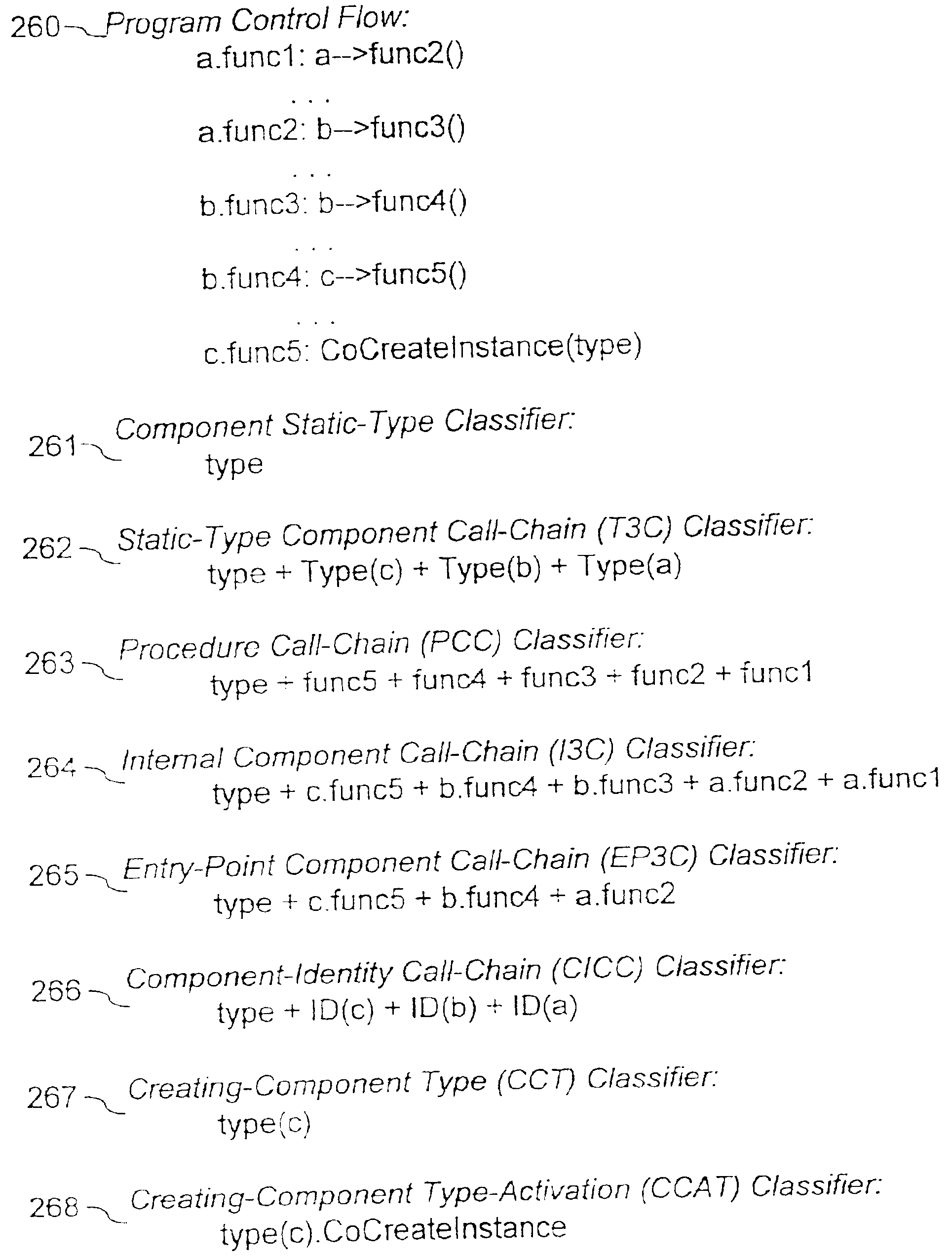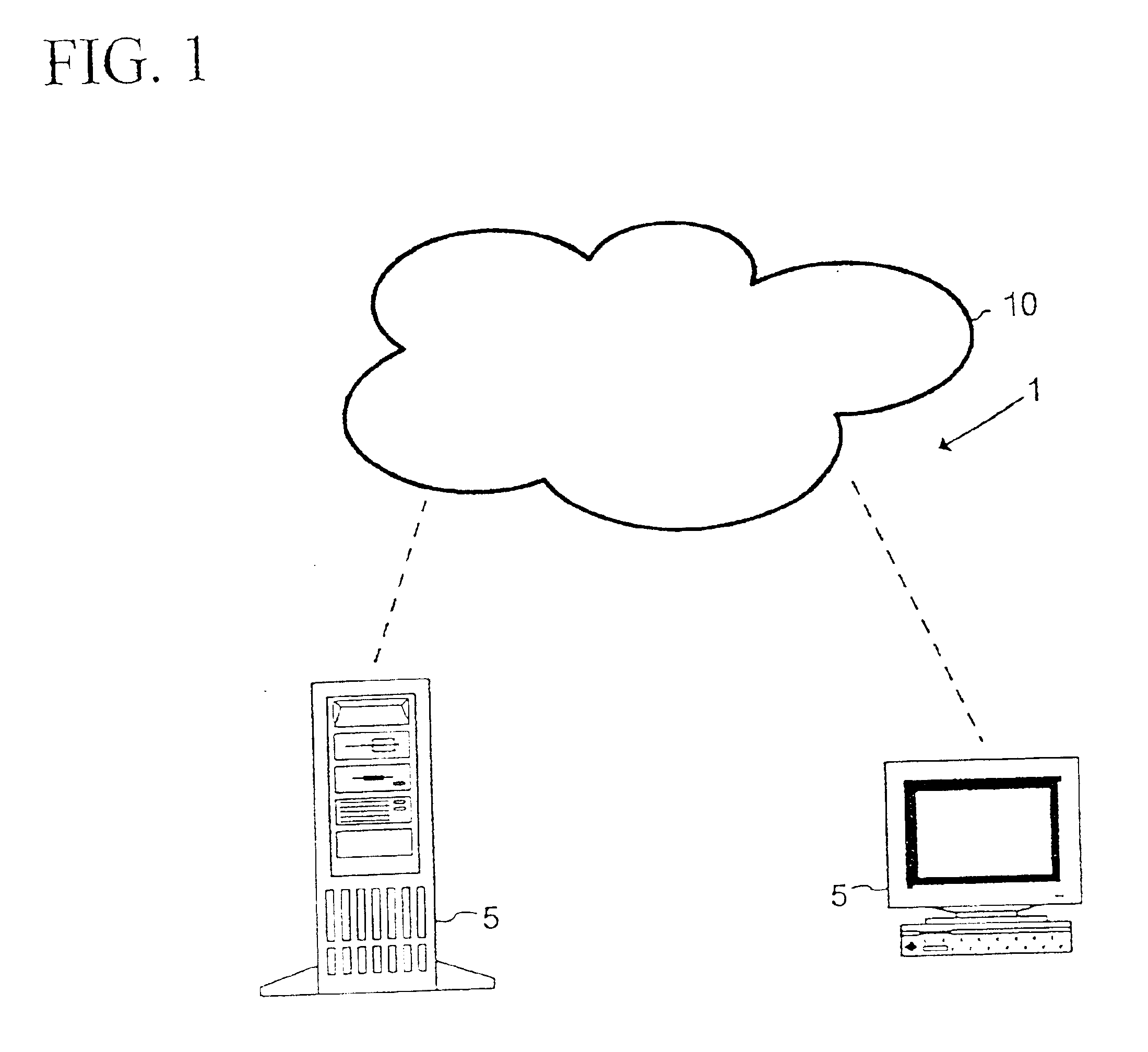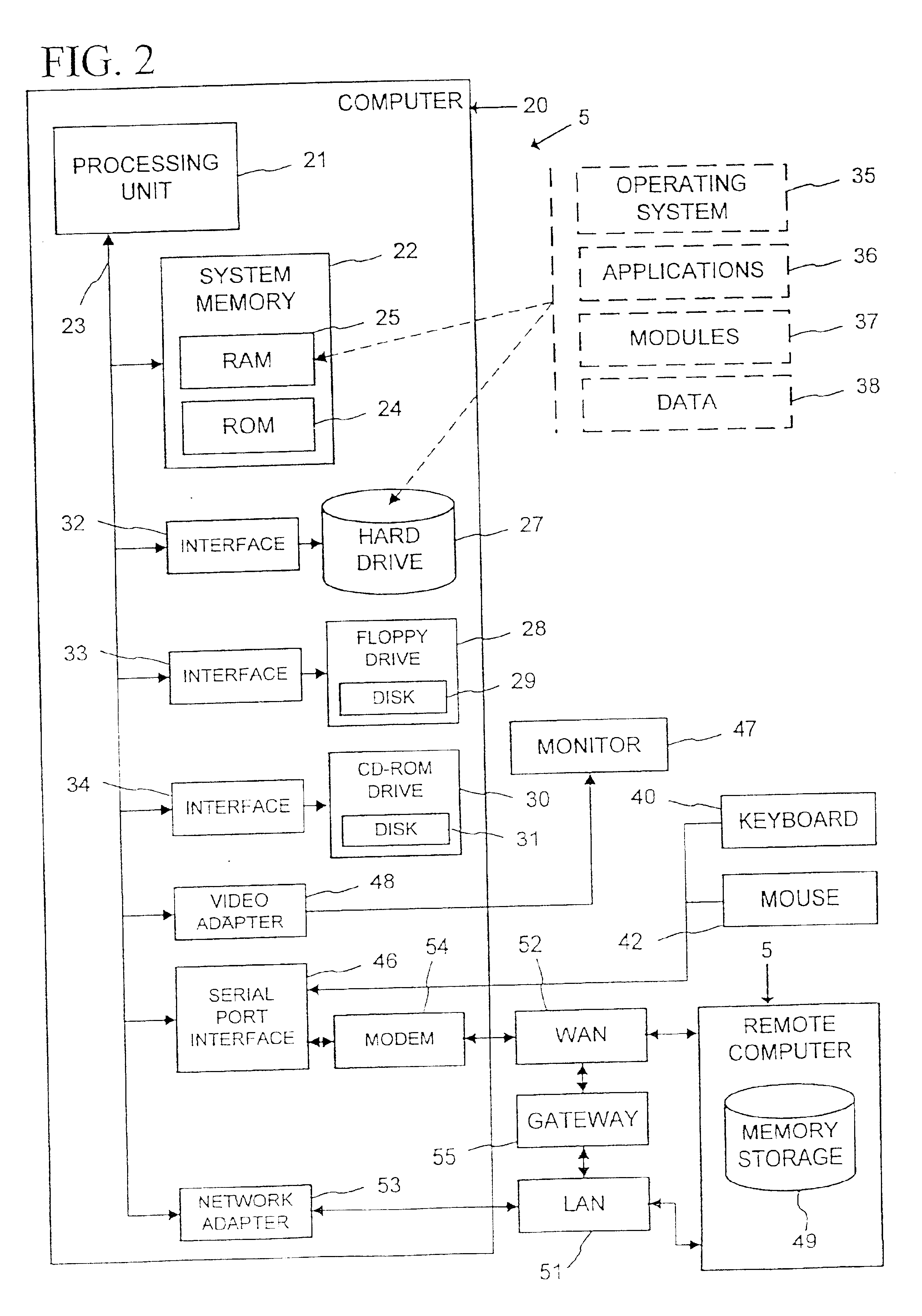Dynamic classification of sections of software
a technology of software and sections, applied in the field of dynamic classification of sections of software, can solve the problems of difficult and complicated partitioning and distribution of applications, burdensome data transfer, application poorly matched to its intended environment, etc., and achieve the effect of optimizing performan
- Summary
- Abstract
- Description
- Claims
- Application Information
AI Technical Summary
Benefits of technology
Problems solved by technology
Method used
Image
Examples
Embodiment Construction
[0043]The present invention is directed toward automatic partitioning of units of an application and distribution of those units. In the illustrated embodiment of the present invention, an application is partitioned into one or more application units for distribution in a distributed computing environment. The COIGN system is one possible refinement of the illustrated ADPS that automatically partitions and distributes applications designed according to the Component Object Model (“COM”) of Microsoft Corporation of Redmond, Washington. Briefly described, the COIGN system includes techniques for identifying COM components, measuring communication between COM components, classifying COM components, measuring network behavior, detecting component location constraints, generating optimal distribution schemes, and distributing COM components during run-time.
[0044]FIGS. 1 and 2 and the following discussion are intended to provide a brief, general description of a suitable computing environ...
PUM
 Login to View More
Login to View More Abstract
Description
Claims
Application Information
 Login to View More
Login to View More - R&D
- Intellectual Property
- Life Sciences
- Materials
- Tech Scout
- Unparalleled Data Quality
- Higher Quality Content
- 60% Fewer Hallucinations
Browse by: Latest US Patents, China's latest patents, Technical Efficacy Thesaurus, Application Domain, Technology Topic, Popular Technical Reports.
© 2025 PatSnap. All rights reserved.Legal|Privacy policy|Modern Slavery Act Transparency Statement|Sitemap|About US| Contact US: help@patsnap.com



